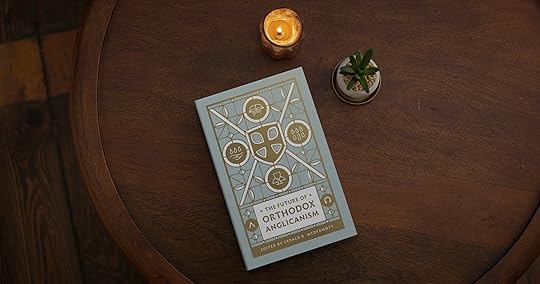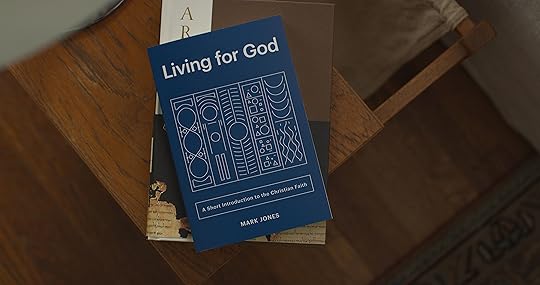Justin Taylor's Blog, page 20
February 27, 2020
5 Areas of Science that Pose Problems for Evolution
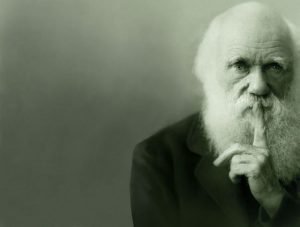
The Discovery Institute summarizes five areas of science that pose serious problems for the neo-Darwinian model of chemical and biological evolution:
Genetics: Mutations cause harm and do not build complexity.
Biochemistry: Unguided and random processes cannot produce cellular complexity.
Paleontology: The fossil record lacks intermediate fossils.
Taxonomy: Biologists have failed to construct Darwin’s “Tree of Life.”
Chemistry: The chemical origin of life remains an unsolved mystery.
1. Genetics

Mutations cause harm and do not build complexity.
Darwinian evolution relies on random mutations that are selected by a blind, unguided process of natural selection that has no goals.
Such a random and undirected process tends to harm organisms and does not improve them or build complexity.
As National Academy of Sciences biologist Lynn Margulis has said, “new mutations don’t create new species; they create offspring that are impaired.”
Similarly, past president of the French Academy of Sciences, Pierre-Paul Grasse, contended that “mutations have a very limited ‘constructive capacity’” because “no matter how numerous they may be, mutations do not produce any kind of evolution.”
2. Biochemistry

Unguided and random processes cannot produce cellular complexity.
Our cells contain incredible complexity, like miniature factories using machine technology but dwarfing the complexity and efficiency of anything produced by humans.
Cells use miniature circuits, motors, feedback loops, encoded language, and even error-checking machinery to decode and repair our DNA.
Darwinian evolution struggles to build this type of integrated complexity.
As biochemist Franklin Harold admits: “there are presently no detailed Darwinian accounts of the evolution of any biochemical or cellular system, only a variety of wishful speculations.”
3. Paleontology

The fossil record lacks intermediate fossils.
The fossil record’s overall pattern is one of abrupt explosions of new biological forms, and possible candidates for evolutionary transitions are the exception, not the rule.
This has been recognized by many paleontologists such as Ernst Mayr who explained in 2000 that “new species usually appear in the fossil record suddenly, not connected with their ancestors by a series of intermediates.”
Similarly, a zoology textbook observed that “Many species remain virtually unchanged for millions of years, then suddenly disappear to be replaced by a quite different, but related, form. Moreover, most major groups of animals appear abruptly in the fossil record, fully formed, and with no fossils yet discovered that form a transition from their parent group.”
4. Taxonomy
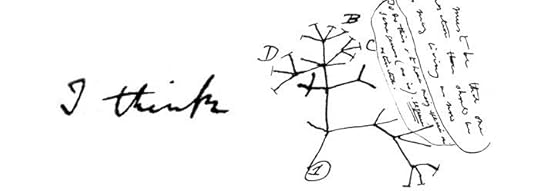
Biologists have failed to construct Darwin’s “Tree of Life.”
Biologists hoped that DNA evidence would reveal a grand tree of life where all organisms are clearly related.
It hasn’t.
Trees describing the alleged ancestral relationships between organisms based upon one gene or biological characteristic very commonly conflict with trees based upon a different gene or characteristic.
As the journal New Scientist put it, “different genes told contradictory evolutionary stories.”
The eminent microbiologist Carl Woese explained that such “phylogenetic” conflicts “can be seen everywhere in the universal tree, form its root to the major branchings within and among the various taxa to the makeup of the primary groupings themselves.”
This implies a breakdown in common descent, the hypothesis that all organisms share a common ancestor.
5. Chemistry

The chemical origin of life remains an unsolved mystery.
The mystery of the origin of life is unsolved and all existing theories of chemical evolution face major problems.
Basic deficiencies in chemical evolution include a lack of explanation for how a primordial soup could arise on the early earth’s hostile environment, or how the information required for life could be generated by blind chemical reactions.
As evolutionary biologist Massimo Pigliucci has admitted, “we really don’t have a clue how life originated on Earth by natural means.”
For competent books making the case for design and showing scientific problems with neo-Darwinianism, see Stephen Meyer’s Signature in the Cell: DNA and the Evidence for Intelligent Design (2009) and Darwin’s Doubt: The Explosive Origin of Animal Life and the Case for Intelligent Design (2013).
The best entry to the case for intelligent design is now Douglas Axe’s Undeniable: How Biology Confirms Our Intuition that Life Is Designed (2016).
For an introduction that includes interaction with the biblical material and array of other questions, see Kenneth Keathley and Mark Rooker’s 40 Questions About Creation and Evolution (2014).
February 25, 2020
The Least of These and Matthew 25: The Right Doctrine from the Wrong Text

In Matthew 25:35–40, Jesus says:
“I was hungry and you gave me food, I was thirsty and you gave me drink, I was a stranger and you welcomed me, I was naked and you clothed me, I was sick and you visited me, I was in prison and you came to me.”
Then the righteous will answer him, saying, “Lord, when did we see you hungry and feed you, or thirsty and give you drink? And when did we see you a stranger and welcome you, or naked and clothe you? And when did we see you sick or in prison and visit you?”
And the King will answer them, “Truly, I say to you, as you did it to one of the least of these my brothers, you did it to me.”
New Testament scholar Craig Blomberg comments:
The majority perspective has understand Jesus’ ‘brothers’ in verse 40 to refer to spiritual kin, as the term (adelphoi) does elsewhere in Matthew in every instance in which biological siblings are not in view (see 5:22–24, 47; 7:3–5; 12:48–50; 18:15 twice, 21, 35; 23:8; 28:10).
The term ‘little ones’, of which ‘the least’ (25:40, 45) is the superlative form, also without exception in Matthew refers to disciples (10:42; 18:6, 10, 14; cf. also 5:19 and 11:11).
This makes the point of Jesus’ teaching closely parallel to Matthew 10:42: Jesus’ itinerant followers (today we might call them Christian missionaries) must be cared for by those to whom they minister. Affording material help to those who preach in the name of Jesus demonstrates acceptance of the missionaries’ message at the spiritual level . . . This view is almost certainly correct.
Today, however, the prevailing interpretation is that Jesus is teaching about the need to help the dispossessed whether or not they are Christian. . . .
This is obviously an important biblical theme, but is far less likely to be the focus of this particular passage, given the consistent meaning of the terms and the larger context of parables caring about the disciples (24:43–25:46).
— Craig L. Blomberg, Neither Poverty nor Riches: A Biblical Theology of Material Possessions, New Studies in Biblical Theology, ed. D. A. Carson (Downers Grove, IL: IVP, 2000), 126; my emphasis.
Matthew 25: The Right Doctrine from the Wrong Text

In Matthew 25:35–40, Jesus says:
“I was hungry and you gave me food, I was thirsty and you gave me drink, I was a stranger and you welcomed me, I was naked and you clothed me, I was sick and you visited me, I was in prison and you came to me.’
Then the righteous will answer him, saying, ‘Lord, when did we see you hungry and feed you, or thirsty and give you drink? And when did we see you a stranger and welcome you, or naked and clothe you? And when did we see you sick or in prison and visit you?’
And the King will answer them, ’Truly, I say to you, as you did it to one of the least of these my brothers, you did it to me.’”
New Testament scholar Craig Blomberg comments:
The majority perspective has understand Jesus’ ‘brothers’ in verse 40 to refer to spiritual kin, as the term (adelphoi) does elsewhere in Matthew in every instance in which biological siblings are not in view (see 5:22–24, 47; 7:3–5; 12:48–50; 18:15 twice, 21, 35; 23:8; 28:10).
The term ‘little ones’, of which ‘the least’ (25:40, 45) is the superlative form, also without exception in Matthew refers to disciples (10:42; 18:6, 10, 14; cf. also 5:19 and 11:11).
This makes the point of Jesus’ teaching closely parallel to Matthew 10:42: Jesus’ itinerant followers (today we might call them Christian missionaries) must be cared for by those to whom they minister. Affording material help to those who preach in the name of Jesus demonstrates acceptance of the missionaries’ message at the spiritual level . . . This view is almost certainly correct.
Today, however, the prevailing interpretation is that Jesus is teaching about the need to help the dispossessed whether or not they are Christian. . . .
This is obviously an important biblical theme, but is far less likely to be the focus of this particular passage, given the consistent meaning of the terms and the larger context of parables caring about the disciples (24:43–25:46).
—Craig L. Blomberg, Neither Poverty nor Riches: A Biblical Theology of Material Possessions, New Studies in Biblical Theology, ed. D. A. Carson (Downers Grove, IL: IVP, 2000), 126; my emphasis.
February 20, 2020
New Books and Bibles Releasing from Crossway in February

As a new feature for this blog, I want to start doing a monthly post on the various new books and Bibles being published by Crossway, where I have the privilege of serving as publisher for books.
New and notable titles for February include Craig Troxel’s book on loving God With All Your Heart, a set of theological board books for toddlers, Sanctification by John MacArthur, an edited volume on The Future of Orthodox Anglicanism from Gerald McDermott, Living for God by Mark Jones, a study guide to Greg Gilbert’s bestselling What Is the Gospel?, and the ESV Seek and Find Bible for kids.
With All Your Heart: Orienting Your Mind, Desires, and Will toward Christ
The Bible commands believers to “love the Lord with all your heart.” But with sinful and fickle hearts, how can they possibly obey that command? The heart, a term used all over the Bible, is a complex reality that captures the totality of a person’s inner nature. This book explores the three capacities of the heart (knowing, loving, and choosing), explaining how each is redeemed through the threefold office of Christ (prophet, priest, and king). As readers comprehend the heart as the source of all their thoughts, fears, words, and actions, they will discover principles and practices for orienting their hearts to truly love and obey God with all that they are.
“So much depends on a clear, scriptural understanding of ourselves, and Troxel—a pastor and instructor of pastors—has given us just that.”
—Ed Welch, Counselor and Faculty Member, Christian Counseling & Educational Foundation
Big Theology for Little Hearts (Series)
Devon and Jessica Robyn Provencher
Big Theology for Little Hearts is a board book series for children ages 1–5 that teaches key Christian truths in simple, easy-to-understand terms. Each book introduces a big idea from the Bible with concise definitions and engaging illustrations to help young minds gain a foundational understanding of God’s Word. As each book’s topic builds on the previous one, children can develop a cohesive framework of theology that includes God, creation, humanity, Jesus, and the gospel—allowing parents to start having crucial conversations with their children as early as possible.
The first book in the series—God—lays a foundation for understanding who God is, defining 10 words that describe God so children know what to believe and how to follow him. The second book—Jesus—helps children understand important truths about Jesus as God, King, rescuer, priest, and prophet, and how he came to earth to atone for our sins and defeat death once and for all. The third book—The Gospel—tells children why they need to be forgiven of their sins, what Jesus has done for them on the cross, and how they can respond to the gospel and receive eternal life.
“In Big Theology for Little Hearts, Devon and Jessica Provencher have provided an incredibly helpful resource for teaching your children about God and his gospel.”
—Greg Gilbert, Senior Pastor, Third Avenue Baptist Church, Louisville, Kentucky
Sanctification: God’s Passion for His People
This book points to the primary aim of pastoral ministry: the sanctification of God’s people. Drawing on John 17 and Titus 2:11–15, veteran pastor John MacArthur makes the case that God’s passion for his people is their sanctification, defined as “the process of fighting for full joy and not selling out for a cheap substitute along the pathway.” He describes 3 hindrances to sanctification (heresy, complacency, and culture) and shows pastors how to work toward the sanctification of their members. Pastors and church leaders will see how, through preaching and discipleship, they can help their members be conformed to Christ.
“Saturated with Scripture, straightforward, and easy to understand, MacArthur’s words show what the Bible teaches about sanctification and how it applies both to the individual Christian and to the local church.”
—Donald S. Whitney, Associate Dean and Professor of Biblical Spirituality, The Southern Baptist Theological Seminary; author, Family Worship; Spiritual Disciplines for the Christian Life; and Praying the Bible
The Future of Orthodox Anglicanism
Gerald McDermott (Editor)
Anglicanism is the fastest growing Christian communion in the world today. It is attracting evangelicals who hunger for connections to the early church and for mystery, sacraments, and liturgy. But many people, even Anglicans themselves, don’t really understand what sets today’s Anglicanism apart from some of its history and distinguishes it from other Christian denominations. In 11 essays by leading Anglican scholars representing perspectives from East Africa, North Africa, and North America, this book clarifies what distinguishes Anglicanism from both Roman Catholicism and other denominations, reflecting on the tradition’s rich legacy in the past while offering a winsome proposal for the future.
“Warm kudos to Gerald McDermott for skillfully bringing together these insightful essays from across orthodox Anglicanism.”
—Hans Boersma, Chair, Order of St. Benedict Servants of Christ Endowed Professorship in Ascetical Theology, Nashotah House Theological Seminary
Living for God: A Short Introduction to the Christian Faith
What difference should doctrine make on our day-to-day Christian life? This book summarizes Christianity in 5 core truths—the Trinity, the Son of God, the Spirit, the church, and heaven and hell—to show how theology is intended to bring people closer to God. Drawing from writers throughout church history—particularly St. Augustine, Richard Baxter, and C. S. Lewis—this book summarizes the building blocks of “pure Christianity” and how they shape minds, hearts, and actions, so readers can know simply and concisely what it means to live for God.
“Mark Jones’s helpful discussion of these major elements of the Christian faith demonstrates his point, shared with C. S. Lewis, that the best resources for devotion to Christ are found in substantial theological investigation conducted under the authority of Scripture.”
—Robert Letham, Professor of Systematic and Historical Theology, Union School of Theology
What Is the Gospel? Study Guide
Greg Gilbert’s best-selling book What Is the Gospel? has sold over 250,000 copies, helping Christians and non-Christians alike gain a clear understanding of the central message of God’s Word. This study guide was created to further help readers answer this important question and apply the gospel to their lives. Reflection questions, along with summaries and key Scripture passages for every chapter, empower readers to explain the gospel in their own words and apply the truths found in the book. Intended for small groups, one-on-one studies, or individual use, this study guide works alongside What Is the Gospel? to help readers center every part of their lives around the good news of the gospel.
“Greg Gilbert is someone I have had the honor and privilege of teaching and who is now teaching me. This little book on the gospel is one of the clearest and most important books I’ve read in recent years.”
—Mark Dever, Senior Pastor, Capitol Hill Baptist Church, Washington, DC; President, 9Marks
ESV Seek and Find Bible
This full-color children’s Bible for ages 5–9 combines the complete ESV Bible text with 130 retellings of major Bible stories alongside vibrant illustrations. Each Bible story is clearly summarized for young readers, directs them to where to find the story in the Bible text, and also includes a key verse to memorize, related Bible readings for discovering more of the story throughout the Bible, and simple questions for families to help children begin to understand and apply God’s Word. Colorful icons make it easy for young readers to see where each story is found in Scripture and to locate the illustration that goes with it. The ESV Seek and Find Bible is the perfect first Bible for young readers, and a wonderful resource for families to use together.
“Our family is excited for the rerelease of the ESV Seek and Find Bible and its vision to put the 130 retellings in the context of the full book of Scripture. We pray that having it all in one place will help our daughters transition from the retellings to the real tellings they will lean on their whole lives.”
—David Mathis, Executive Editor, desiringGod.org; Pastor, Cities Church, Saint Paul, Minnesota; author, Habits of Grace: Enjoying Jesus through the Spiritual Disciplines
November 5, 2019
A Help for Apologists and the Rest of Us: Myths and Mistakes in New Testament Textual Criticism
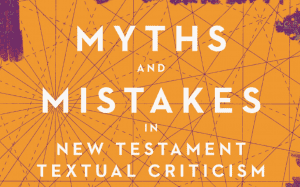
InterVarsity Press has just released a remarkable book that will step on some toes and will serve the church:
Myths and Mistakes in New Testament Textual Criticism, edited by Elijah Hixson and Peter Gurry.
Daniel Wallace writes in the foreword:
The authors in this book offer a necessary corrective to decades of overly exuberant apologetic arguments―arguments that have actually hurt the Christian faith. The writers are refreshingly honest, and they do not pull their punches. They observe poignantly that apologetic works on the reliability of the New Testament text have been drifting away from a proper, well-researched, accurately documented scholarship that is anchored to actual data. Apologists have had a tendency to regurgitate other apologetic works, which in turn are based on other apologetic works. Meanwhile, the scholarship that is supposedly behind the popular declarations in many an evangelical trade book is out-of-date, misunderstood, or simply ignored.
These young scholars have something to say―not only to Christian speakers and writers but to non-Christian speakers and writers and even to New Testament scholars of all stripes. I was happily stunned to see the depth of discussion, the candid examination, and the up-to-date bibliography in each chapter. Although Myths and Mistakes in New Testament Textual Criticism is written in clear, user-friendly prose, the contents are well-grounded and perspicacious.
Timothy Paul Jones writes about the book:
Early in my work as an apologist, I made an embarrassing number of mistakes when it came to comments about textual criticism. In almost every instance, a book like this one would have provided the broader perspective that I needed to speak the truth with greater precision. What Elijah Hixson and Peter Gurry have provided in this handbook is a tool that every would-be defender of the Christian faith should purchase and regularly consult.
What follows are some selective takeaways from several of the chapters.
1. Introduction (Peter J. Gurry and Elijah Hixson
Information about the reliability of the New Testament in apologetic handbooks is often outdated.
Christians need to avoid the tendency to “believe what we want to be true” about the early manuscripts of the New Testament.
We should be careful not to appeal to exaggerated or sensationalistic claims.
3. Math Myths: How Many Manuscripts We Have and Why More Isn’t Always Better (Jacob W. Peterson)
New manuscripts continue to be discovered, usually in existing libraries or collections. These, however, are by no means equal in size or significance.
Most manuscripts of the New Testament are only manuscripts of part of the New Testament, and providing an exact count of them is a fool’s errand.
It is best to say that there are about 5300 Greek New Testament manuscripts in existence, although 5100 might be the safer estimate.
4. Myths about Classical Literature: Responsibly Comparing the New Testament to Ancient Works (James B. Prothro)
Scholars and apologists often count all the manuscripts for the New Testament that exist (an inclusive count), whereas classicists generally only count the ones they need to use (a functional count). This needs to be considered when comparing numbers.
Apologists’ numbers too often reflect this inclusive count for the New Testament but a functional count for manuscripts of classical works and end up comparing apples and oranges. Whichever count is used, one should be consistent on both sides.
When counting manuscripts and giving dates for comparison, scholars and apologists also often give numbers that reflect or exaggerate the most recent discoveries for New Testament manuscripts, but do not check for updated numbers or dates for classical manuscripts. Consistency in comparison should be clear here too.
The comparative argument is valuable but limited; it can demonstrate only that the New Testament has a better textual basis than classical works, not that it has a perfect one. Text-critical methods are what give reliability to our use of the manuscripts, not the numbers alone. The more specific your number is, the more vulnerable it is to a skeptic who wants to weaken your credibility.
5. Dating Myths, Part One: How We Determine the Ages of Manuscripts (Elijah Hixson)
Often a manuscript can be dated only by paleography, which is a difficult and imprecise way of assigning the date by means of an assessment of the handwriting.
It is almost always unwise to assign a date range of fewer than fifty years on the basis of paleography; a range of seventy-five to one hundred years is typically more preferable.
Always try to give the full range; do not assume the earliest date is the right date.
The responsible date range of P52, probably our earliest New Testament manuscript, is AD 100–200, and a few scholars even extend this range into the 200s.
7. Myths About Copyists: The Scribes Who Copied Our Earliest Manuscripts (Zachary J. Cole)
The earliest copyists of New Testament manuscripts were neither careless amateurs nor professionals with Xerox-machine accuracy. From the quality of the handwriting, we find a wide range of scribal skills and abilities among the early manuscripts, but a majority appear to be competent transcribers.
As a group, early New Testament manuscripts show the same levels of care, experience, and accuracy that one could reasonably expect of any ancient text. When compared with carefully copied later manuscripts, the earliest scribes do not appear overly careless, as they are often described.
The macrostructure of the New Testament is remarkably stable, especially in comparison to other ancient works. Though textual variation exists, it is usually at the micro rather than macro level.
10. Myths About Variants: Why Most Variants Are Insignificant and Why Some Can’t Be Ignored (Peter J. Gurry)
The estimated number of variants in just our Greek manuscripts is around half a million, not including spelling differences. Nearly half of these are meaningless mistakes.
It is true that most variants do not affect the meaning of the text or the Christian faith in general. A few dozen do, however, and some of these are theologically important, as in Mark 1:1; Luke 23:34; and John 1:18.
We should not give the impression that New Testament variants do not matter at all for Christian theology or practice; we can and should, however, recognize that no doctrine is in jeopardy because of a serious variant.
11. Myths About Orthodox Corruption: Were Scribes Influenced by Theology, and How Can We Tell? (Robert D. Marcello)
Scribes did sometimes change the text for theologically motivated reasons; however, not a few textual variants that might appear to be theologically motivated are better explained by other factors.
Determining the intention behind textual variants is much more difficult than some surmise. This means we should be appropriately skeptical about bold claims of theologically motivated variation or “orthodox corruption.”
12. Myths About Patristics: What the Church Fathers Thought About Textual Variation (Andrew Blaski)
The argument that we can reconstruct all but eleven verses of the New Testament from 36,289 quotations by the church fathers is not only false but it is a conflation of two different arguments that are both riddled with problems. It should not be used.
14. Myths About Early Translations: Their Number, Importance, and Limitations (Jeremiah Coogan)
There are probably not ten thousand Latin manuscripts, and claiming 25,000 New Testament manuscripts beyond the Greek is an exaggeration too big to keep using. It is better to say there are a few thousand versional manuscripts and leave it at that.
We all have a lot to learn from these rising stars of textual criticism who care about the truth and the witness of our apologetics.
November 4, 2019
15 Theses on Evangelical Theology
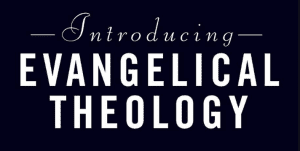
Daniel Treier is Knoedler Professor of Theology at Wheaton College Graduate School in Wheaton, Illinois.
Introducing Evangelical Theology is his “introductory textbook for evangelical colleges, universities, and seminaries that offers students a biblically rich, creedally structured, ecumenically evangelical, and ethically engaged introduction to Christian theology.”
“Treier,” writes Fred Sanders, “has produced a tool for training the evangelical mind and for training the mind evangelically. Introducing Evangelical Theology is an instrument of catechesis designed for our times.”
Treier explained to Ed Stetzer what he thinks make this theology work unique:
Other theology textbooks have their virtues, but I have struggled to find a book that is
(1) deeply biblical, yet without “prooftexting”;
(2) specifically evangelical, yet without neglecting the wider Christian tradition;
(3) creedal, yet without favoring “high” church over “free” church;
(4) detailed, yet without being dull;
(5) current with global and scholarly developments, yet without being trendy.
In light of the priesthood of all believers, I have worked hard to explain biblical concepts and theological debates with plain language and short sentences.
I hope that people will recognize here a tradition of evangelical theology
inaugurated by the Protestant Reformation;
revived in the era of Edwards, Wesley, and Whitefield;
fundamentally faithful, yet culturally reengaged, thanks to the Henry generation; and
challenged by Stott, Padilla, and others at Lausanne to keep the gospel central while pursuing integral forms of mission.
Put differently, I hope that this textbook will be a fitting instructional companion to the Evangelical Dictionary of Theology.
I also hope that people will encounter here some biblical reforms that evangelical theology needs to embrace more wholeheartedly: notably, the classic roots of catechesis in the Trinitarian creeds, the Ten Commandments, and the Lord’s Prayer. These roots undergird a more extensive approach of expounding key biblical texts to anchor particular doctrines, such as Isaiah 40 for the doctrine of God.
What follows are these thesis for each chapter of his systematic theology. (I’ve added the bullet points and changed the semi-colons to periods.)
Part 1. Knowing the Triune God
1. The Creed: Faith Seeking Understanding
Christian theology is a communicative practice of
faith seeking understanding,
in response to the Word of the Triune God
accompanied by the Holy Spirit.
2. The Ten Commandments: A Community’s Moral Formation
Christian beliefs are integrated with behavior, extending Israel’s moral tradition from the Ten Commandments to root human community in the love of God and neighbor.
3. The Lord’s Prayer: The Church’s Spiritual Formation
Christian beliefs are integrated with belonging as well as behavior, reforming Israel’s spiritual tradition to inaugurate a community of grace among Jesus’s followers, as epitomized in the Sermon on the Mount and especially the Lord’s Prayer.
Part 2. The Father, the Almighty Lord
4. The Triune Name of God
Christian orthodoxy teaches that the one true God is triune, existing in three persons—Father, Son, and Holy Spirit—who are undivided in the external works that reveal the divine identity.
5. The Character of Providence
From creation to consummation, providence reveals the Triune God’s perfections of power, wisdom, love, and holiness.
The drama of redemption is the setting in which the Bible addresses the mystery of divine sovereignty and human responsibility along with the meaning of evil.
6. The Goodness of Creation
Creation out of nothing is an article of Christian faith according to which the Triune God has spoken the world into existence—granting
dignified life,
dependent freedom, and
delightful fellowship
to creatures in their
materiality,
sociality, and
temporality.
7. Human Beings
Human beings are uniquely created to commune with God and to communicate what God is like.
For this calling God has made them embodied souls and relational selves, with each person and culture having dignity rooted in God’s love and their diversity being an occasion of divine delight.
Part 3. The Son, the Mediating Logos
8. The Identity of Jesus Chris
The orthodox identity of Jesus Christ involves the hypostatic union: in the Incarnation the fully divine Son of God has assumed a fully human nature, to serve as the One Mediator of revelation and redemption.
9. The Ministry of Reconciliation
Jesus Christ’s ministry of reconciliation as the Mediator between God and humanity is
signaled by his virginal conception;
continues throughout his earthly ministry as messianic prophet, priest, and king;
climaxes in his atoning passion; and
commences a newly exalted phase in his resurrection and ascension.
10. Sin and Salvation
All of Adam and Eve’s descendants are born dead in sin, which is rooted in idolatry and inevitably results in injustice.
The Spirit’s application of Jesus’s reconciling work brings salvation from sin’s past, present, and future effects of sin;
justification removes sin’s penalty,
regeneration removes sin’s power, and
glorification removes sin’s presence from those who are united with Christ.
11. The Gospel in Christian Traditions
The gospel takes cultural form
in Orthodox Christianity, emphasizing a tradition of theosis;
in Catholic Christianity, emphasizing the sacramental renewal of creaturely being; and
in seven major traditions of Protestant Christianity, emphasizing the gospel’s freedom for biblical reform.
Part 4. The Holy Spirit, the Life Giver
12. God’s Empowering Presence
The Holy Spirit is
the divine Giver of creaturely life, pouring out common grace, and
the divine Giver of new life, applying Christ’s redeeming grace as God’s empowering presence—fostering
conversion,
consecration,
assurance and perseverance, and
shared ministry.
13. Scripture
The authority of Holy Scripture emerges from God’s final Word having been spoken in Jesus Christ.
By the Holy Spirit, the written words and message of the prophets and apostles faithfully proclaim divine truth and powerfully rule over the church—even, with appropriate nuance, through various translations and the process of interpretation.
14. Church
The Bible identifies the church as God’s people in Christ/
The Spirit graciously uses various practices for shaping the church as a community of
worship,
nurture, and
witness.
Along with Word and “sacrament,” institutional order marks the church, yet traditional models of polity require wise modern implementation and humble acknowledgment of communal brokenness.
15. All Things New
The vital Christian hope that God will make all things new has both cosmic and personal dimensions:
cosmically, involving the return and reign of Christ as anticipated in biblical prophecy;
personally, involving resurrection of the body and final judgment.
This hope is already inaugurated but not yet completely fulfilled—thus serving as an impetus for mission and an incentive for martyrdom in whatever form becomes necessary.
October 30, 2019
Why YRR Needs to Go Deeper with the Reformation
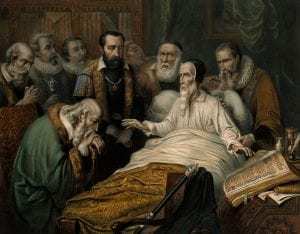
Reformed theologian Michael Horton, writing in the foreword for Lutheran Harold Senkbeil’s The Cure of Souls: Cultivating a Pastor’s Heart (Lexham, 2019):
Among younger evangelicals there has been a great renaissance of interest in the Reformation and its theology.
This is very exciting.
Yet it is remarkably thin.
Justification, election and other truths of God’s free grace in Christ are often lifted out of their wider gospel context. When it comes to actual pastoral ministry, however, many “Young, Restless and Reformed” pastors don’t know where to turn and simply fall back on seminary courses or resources that are grounded in a quite different orientation.
They may have learned a new doctrine. However, Reformation piety is not just a doctrine; it is a new way of conceiving God, humanity, salvation, vocations in the world, and the hope of resurrection. It is a new way of being a pastor, of leading God’s people. Just as one cannot patch up an old wineskin, one cannot simply tack on a few Christ-centered doctrines to an essentially human-centered approach to pastoral ministry.
The Reformation was not just about doctrinal correctness; it was about salvation, which can only be found in Christ—even for lifelong believers. Consequently, both Lutheran and Reformed traditions produced a large literature on the cure of souls. This legacy is largely unknown today. It is easy to tack on the “Five Points of Calvinism” or “Justification” to approaches to ministry that are fundamentally at odds with the basic insights of the Reformers. Many seem to assume that while the Reformation recovered a few important doctrines, one must turn elsewhere for rich expositions of biblical piety and pastoral ministry. This is to ignore the vast resources that can provide deeply-needed evangelical wisdom in our own day. . . .
The Reformation did not cast off sixteen centuries of pastoral theology; instead, it returned the focus of the ministry to the public and private application of the word to the lives of God’s people.
October 28, 2019
Bart Ehrman and Peter Williams Debate Whether We Can Trust the Gospels

The famed agnostic biblical scholar and textual critic Bart Ehrman recently debated Christian biblical scholar Peter J. Williams on the reliability of the Gospel accounts of Jesus’s life, death, and resurrection. They were hosted by Justin Brierley, who started the Big Conversation video series for his program Unbelievable? featuring world-class thinkers across the Christian and atheist community discussing faith, science, and what it means to be human.
Williams’s book, Ehrman says, is “well thought-out, very smart, intelligent, with a lot of information in it.” You can find more information it below.
Does Science Disprove Adam and Eve? An Interview with a Biologist and a Mathematician

A significant new study has just been published, showing that it is scientifically possible—contrary to what is often claimed—that human beings descend from a single human couple:
Ola Hössjer and Ann Gauger, “A Single-Couple Human Origin Is Possible,” BIO-Complexity 2019 (1):1– 20.
Here are the authors of the piece:
Ola Hössjer is Professor of Mathematical Statistics at Stockholm University, Sweden. He has done research in statistics and probability theory with applications in population genetics, epidemiology, and insurance mathematics. Hössjer is the author of 85 peer-reviewed papers, he has supervised 13 PhD students, and in 2009 he received the Gustafsson prize in Mathematics.
Ann Gauger is a senior research scientist at Biologic Institute. Her work uses molecular genetics and genomic engineering to study the origin, organization, and operation of metabolic pathways. She received a BS in biology from MIT, and a PhD in developmental biology from the University of Washington, where she studied cell adhesion molecules involved in Drosophila embryogenesis. As a post-doctoral fellow at Harvard she cloned and characterized the Drosophila kinesin light chain. Her research has been published in Nature, Development, and the Journal of Biological Chemistry.
I asked them if they could explain the model they used and why it’s never been done before.
Let’s start with what you concluded: “As far as we know scientifically from the genetic data, the human species could have come from as a single couple, so that all humans alive today could have descended uniquely from that first pair.” How important is the word “could” in this sentence? I am assuming you would not say that science has proven this, but rather that at this stage in our knowledge, it at least allows it?
AG: The science as we know it shows that it is mathematically possible for us to have come from just one man and one woman. That is based on population genetics, a field that keeps track of genetic diversity in populations over time.
We say it is possible, not proven, because there are many other things to deal with, like the fossil record.
OH: Yes, this is correct. It is hard to prove that a certain model of human history is the right one based on genetic data from individuals of today. The reason is that sometimes quite different models of human ancestry might fit genetic data equally well.
We showed that a model with a first unique couple gave a good fit to some African genetic data. Therefore we cannot rule out a model where humanity started from a first couple in favor of a model where we share ancestry with chimps and other species.
Despite these difficulties of inferring human history, it might be possible though in the future to favor one model over the other, when more data sets are analyzed and more complex models are fitted.
For those readers—most of us!—who are not biologists, geneticists, or mathematicians, could you explain the basic idea of how a researcher can infer history from genetic data?
OH: Genetic data is like fingerprints. Any individual (except monozygotic twins) has a unique DNA that identifies him or her. The more related two different individuals are, the more similar their genetic data is.
Human history is like a genealogical tree that connects all individuals alive today. The first human couple forms the root of the tree, whereas individuals of the present form the tips of the tree.
It is possible to infer a tree of human ancestry (with quite a lot of uncertainty) by trying to fit various trees and investigate which of these trees that are most consistent with genetic data. The inferred tree should be able to pick up that pairs of individuals with more similar DNA are more closely related. That is, pairs of individuals with more similar DNA should have ancestral lineages that merge more quickly, so that their most recent common ancestor lived more recently.
To complicate things: A genealogical tree is not the same thing as a pedigree. A pedigree gives parental relationships, whereas a genealogical tree shows how DNA is inherited. Each individual has a unique pedigree but many different genealogical trees. The reason is that genes from different chromosomes are inherited in different ways.
AG: Think of it like solving a puzzle. You have current mutations as clues, and you know who has those mutations. If you are lucky, you also know something about whether those people are related. So you work your way backward in time so that the mutations make sense, arising in person A1, then passing to person A2 and B1, then B2, then B3 in the present.
Massive computational models do it for the whole genome and go back potentially millions of years. It’s a best-fit model, not a guaranteed “this is the way it was on Saturday, April 15, 200,001 BC” kind of thing.
This is an evangelical blog, and evangelicals have been told for many years now that they are being anti-intellectual and anti-scientific if they don’t recognize that because science shows that humans evolved from a large population over a period of millions of years’ therefore we must reject the idea that one human race could have descended from just two human beings. Why do you reject that claim regarding the science? In other words, since you disagree with what other scientists are saying, what are they doing wrong?
OH: Until recently, none tried to fit a model of human ancestry where we all descend from only two human beings.
About ten years ago John Sanford and Robert Carter started working on models where we all descend from one single couple.
A few years later Ann Gauger proposed a similar project which I joined.
For this reason science has actually not ruled out a first human couple—since this model had actually not been tested.
Why is this? Well, the reason is philosophical rather than based on empirical facts. Modern science is very secular. Typically, only those hypotheses are allowed to be tested which can be framed in purely natural terms (= methodological naturalism). A model with a first couple implicitly requires an Intelligent Designer or a Creator in order to answer how this first couple was generated in the first place. Modern science will therefore rule out a first couple model from start (even if one leaves it to the reader to answer how the first couple originated), before data has been analyzed.
To make this more concrete: In all the models where humans share ancestry with chimps, there is essentially only one mechanism for generating genetic diversity: mutations. In our model we allow for a second mechanism—that Adam and Eve were created with diversity. Created diversity of the first couple is like a new parameter that can be tuned and therefore adds flexibility to the model.
AG: First of all, who gave scientists the right to interpret Scripture? Why should they care if we believe that we came from a literal first couple? They stuck their noses in where they didn’t belong.
Second, they actually didn’t test the thing they were claiming.
There are two ways to get a “population of two” start.
(a) There is the two from the beginning, which is self-explanatory. That is what we mean by Adam and Eve.
(b) But there is another way, and that is to start with a population, say a tribe of humans, and then something happens and there are only two left. That is a bottleneck of two.
Either kind of start from two works in our model. They are just the same.
Now, population geneticists used indirect methods to estimate average population size since our putative split from chimps, 6 million years ago. But averaging over that long time period would miss a sudden sharp bottleneck down to two. It would not be detected. They were making unjustified claims when they said we could not have come from two.
What new tests were you able to run to examine whether the single-couple hypothesis is compatible with genetic data?
OH: We were able to fit our single-couple model of humanity to some summary statistics of genetic data.
The first such statistic is called the Allele Frequency Spectrum (AFS). It tells how genetic variants with different frequencies are distributed.
The second summary statistic is called Linkage Disequilibrium (LD) Plots. It tells how genetic data at different parts of the chromosomes are correlated (due to so called recombinations).
We were able to show that the AFS and LD plots of our model matched real data very well.
AG: Ola Hössjer devised an elegant solution to the problem of modeling large numbers over long time spans. I am going to quote myself here to explain it. This comes from an Evolution News article I wrote called We Could Have Come from Two.
[Ola] had a model we now call Haplo that contained within it a simple but brilliant idea. He would start first from current data and use a method called standard coalescence to trace the lineages backward in time, like growing a forest from stems to branches to trunks. Then once he had that forest of trunks, he pruned the picture of all non-productive branches, those that did not have any progeny in the future, the “dead ends,” and used it as a framework for a new forward-looking model. The pruning saved considerable memory and reduced the computational load. This meant we could go deeper in time or handle larger populations. See figure below.
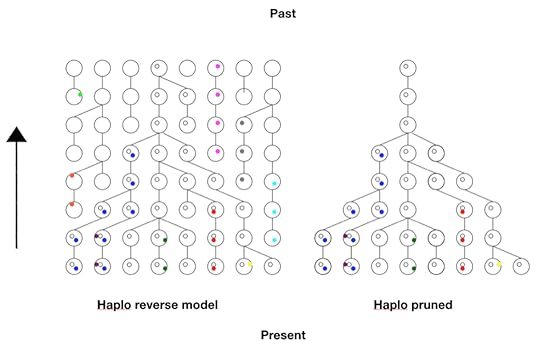
Each row represents a generation, with the present at the bottom, and each ball is a chromosome. The colored dots are different mutations or Single Nucleotide Polymorphisms (SNPs) the chromosome carries. The links from generation to generation show the ancestral lineage of each chromosome going back in time.
In figure A I have shown only one lineage, and so in tracing it backward, there is no pruning necessary, but when a whole collection of coalescence trees are combined (an ancestral recombination graph), some pruning will be necessary, since some chromosomes will be ancestral in some lineages and not others.
First the tree (or forest) in reverse is obtained, much larger and complex than this here, and pruned to reveal nothing but the lineages that led to the present. So this provided the framework, the matrix upon which the forward model will run. The computer doesn’t have to keep track of all possible choices at all possible positions. Look at the pruned tree and notice all the spaces the computer doesn’t have to store in memory. It adds greatly to what the program can accomplish.
You can read the original paper here.
For more work along this line, see the book Theistic Evolution, in particular, Section I, Part 2: “The Case against Universal Common Descent and for a Unique Human Origin.”
10. The Fossil Record and Universal Common Ancestry (Günter Bechly and Stephen C. Meyer)
11. Universal Common Descent: A Comprehensive Critique (Casey Luskin)
12. Five Questions Everyone Should Ask about Common Descent (Paul A. Nelson)
13. The Battle over Human Origins (Introduction to Chapters 14–16) (Ann K. Gauger)
14. Missing Transitions: Human Origins and the Fossil Record (Casey Luskin)
15. Evidence for Human Uniqueness (Ann K. Gauger, Ola Hössjer, and Colin R. Reeves)
16. An Alternative Population Genetics Model (Ola Hössjer, Ann K. Gauger, and Colin R. Reeves)
17. Pressure to Conform Leads to Bias in Science (Christopher Shaw)
October 22, 2019
Was the Road in Jerusalem Discovered by Archaeologists Really Built by Pontius Pilate?

National Geographic reports:
Archaeologists tunneling beneath a Palestinian neighborhood just south of Jerusalem’s walls are uncovering a monumental stepped street that led to the foot of the Temple Mount, the sacred platform that once held the Jewish Temple and now is home to some of Islam’s holiest sites.
The impressive walkway stretched more than a third of a mile, was 26 feet wide, and required some ten thousand tons of limestone slabs. “We think it was a single project built at one time,” says Joe Uziel, the Israel Antiquities Authority archaeologist in charge of the effort. Uziel and his colleagues recently published their findings in Tel Aviv: Journal of the Institute of Archaeology.
Historians long assumed that the Roman-appointed King Herod the Great, who died around 4 B.C., was responsible for most of the great construction efforts that transformed ancient Jerusalem into a major pilgrimage and tourist center. But analysis of more than 100 coins found beneath the stepped street point to the start and completion of the effort under Pilate, who ruled for about a decade starting in A.D. 26 or 27.
The latest coins discovered beneath the paving stones date to around A.D. 31. The most common Jerusalem coins from the first century were minted after 40, “so not having them beneath the street means the street was built before their appearance, in other words only in the time of Pilate,” says Donald Ariel, a coin expert with the Israel Antiquities Authority.
The article quotes two archaeologists on the significance of the discovery if Pilate was involved:
Tel Aviv University archaeologist Nahshon Szanton, the lead author of the study, speculates that Pilate’s construction of the street “may have been to appease the residents of Jerusalem,” as well as to “aggrandize his name through major building projects.” In A.D. 70 the street was buried under rubble following a revolt between Jewish groups that led to the Roman destruction of the city. Many of its slabs were subsequently reused for later projects.
Matthew Adams, director of Jerusalem’s W.F. Albright Institute of Archaeological Research, who was not involved in the work, says the results provide insight into the time when Rome exerted direct control over Judaea. “It also provides some evidence of cooperation between the Roman authorities and the Jewish religious authorities,” he adds, noting that most known sources emphasize tension between the two.
But there is reason to question the dating:
But Jodi Magness, an archaeologist at the University of North Carolina at Chapel Hill, is not wholly convinced. “The material they are finding is coming from fills that might have been brought in with wheelbarrows from anywhere, so I’m skeptical of the dating,” she says. “It is not impossible that Pilate was responsible for the construction, but that is not the only, or even the most likely, possibility.”
I posed the question to Leen Ritmeyer, the world’s leading expert on Jerusalem’s Temple Mount. No one has more experience in the combination of architecture and archaeology in Jerusalem. He was the lead consultant behind the archaeological drawings in the ESV Study Bible.
This street has been known for more than 100 years and parts were excavated by Bliss and Dickie around 1890, by Hamilton in the 1930s and Kenyon in the 1960s. A large stretch was excavated by Mazar in the 1968–1978 excavations in which I participated. In 1975, I was able to draw a plan of the whole street from Robinson’s Arch to the Siloam Pool, which incidentally continued north to the Damascus Gate.
At present the southern half of this street is being excavated below ground, more or less under the present El-Wad Street. One can walk on this street starting near the Siloam Pool and walk halfway up.
It is also possible to walk through the sewer below this street all the way up to Robinson’s Arch.
I don’t believe that Pilate had anything to do with it, as the coins that were found under the street in our dig dated to about AD 54. We therefore believe that the street was built by Agrippa II. [Note: This is the Agrippa who heard Paul’s case at Caesarea Maritima in Acts 26, probably around AD 59.]
To build a street like this through a valley, soil from different places had to be transported, and therefore the AD 31 coins may have come from elsewhere.
Ritmeyer marked the drawings below (from the ESV Study Bible), which show the location of the road under discussion.


These original images can be found in the ESV Study Bible and the ESV atlases.
For really helpful tools on the biblical text and archaeology, I would highly recommend the ESV Archaeology Study Bible and Barry Bietzel’s edited Lexham Geographic Commentary on the Gospels.
Justin Taylor's Blog
- Justin Taylor's profile
- 44 followers





